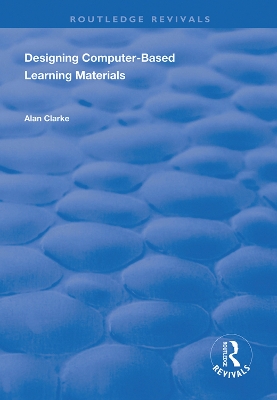Routledge Revivals
1 total work
First published in 2001, this volume demonstrates how computer-based learning has the potential to provide a highly motivating learning experience, that it also has the potential to achieve exactly the opposite, and that the difference between these two extremes is the quality of the learning design.
The challenge for the learning designer isn’t a simple one. You are being asked to prepare interactive learning for someone you can’t see and with whom the only interaction you are likely to have is via limited written communication. Fortunately help is at hand in Alan Clarke’s Designing Computer-Based Learning Materials.
Dr. Clarke offers a definitive guide to each of the many elements involved in good design. This book explores the principles of adult learning, and relates to the potential, features and impact of computer-based learning.
This is not a ‘how to…’ book, but rather one seeking to help you understand the different elements which go into computer-based learning. If you are commissioning material, it will help you to understand the contractors’ constraints. If you are designing materials yourself, it will allow you to avoid many of the errors it is all too easy to make when developing them.
Computer-based learning materials are not all the same: their range reflects the variety of learners that use them and purposes they are used for; the different learning environments that are available to people; the different subjects that they wish to learn and the level to which they wish to take them.
In the face of such a complex task, involving so many factors and variables, it is essential that the learning designer understands what is involved and uses a rigorous process for envisioning, planning, designing, implementing and testing their solution. This is a book about learning design and not about software production and, as such, it provides any aspiring designers with the fundamentals of producing the highly motivating learning experience, which should be their objective.
